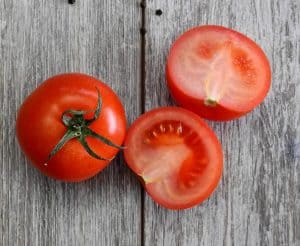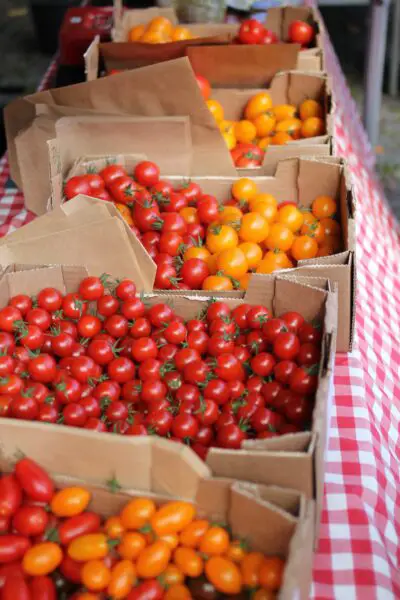In this article, we will discuss whether or not you can freeze tomatoes without cooking them. We’ll explore the benefits and potential drawbacks of freezing raw tomatoes and provide some tips on how to do it properly. By the end, you’ll have a clear understanding of whether freezing tomatoes without cooking them is a viable option for you.

Can You Freeze Tomatoes Without Cooking Them
Are you wondering if it’s possible to freeze tomatoes without cooking them? The answer is a resounding yes! Freezing tomatoes without cooking them is a convenient method to preserve their freshness, flavor, and nutritional value.
By following the right methods and techniques, you can enjoy the taste of summer tomatoes all year round. In this article, we will explore the benefits of freezing tomatoes without cooking, different methods for freezing, packaging and storing tips, thawing and usage suggestions, common mistakes to avoid, and alternative ways to preserve tomatoes.
Benefits of Freezing Tomatoes Without Cooking
Retain Freshness and Flavor
When tomatoes are frozen without cooking, they retain their natural freshness and flavor. This is especially important if you prefer the taste and texture of fresh tomatoes over cooked ones. Freezing tomatoes without cooking allows you to preserve their natural sweetness and juiciness, which can be a delight in salads, salsas, and other dishes.
Preserve Nutritional Value
Tomatoes are known for their rich nutritional content, including vitamins A and C, lycopene, and antioxidants. Freezing tomatoes without cooking helps preserve these nutrients, ensuring you can enjoy their health benefits even after they have been stored in the freezer. This makes it a great option for those who are health-conscious or looking to maintain a nutritious diet.
Versatility in Usage
Frozen tomatoes have the advantage of versatility in usage. You can use them in a variety of recipes, including soups, stews, pasta sauces, and more. By freezing tomatoes without cooking, you have the freedom to decide how you want to prepare them when the time comes, giving you more flexibility in your cooking endeavors.
Methods for Freezing Tomatoes Without Cooking
Now that we understand the benefits of freezing tomatoes without cooking, let’s explore the different methods for achieving this preservation technique.
Choosing Ripe and Firm Tomatoes
When it comes to freezing tomatoes, it’s important to start with ripe and firm ones. Look for tomatoes that are fully ripened but still firm to the touch. Overripe or soft tomatoes may not freeze well and can lead to a mushy texture upon thawing.
Prepping Tomatoes for Freezing
Before freezing tomatoes, they need to be properly prepped. Start by washing the tomatoes thoroughly under running water to remove any dirt or debris. After washing, allow them to dry completely to prevent additional moisture from affecting the quality of the frozen tomatoes.
Blanching vs. Unblanched Freezing
There are two main methods for freezing tomatoes without cooking: blanching and unblanched freezing. Each method has its own benefits and considerations. Let’s explore them further.
Blanching Method
Blanching involves briefly boiling the tomatoes in hot water before freezing them. This blanching process helps to remove the skin easily and improves the texture of the frozen tomatoes. To blanch tomatoes, follow these steps:
- Bring a pot of water to a boil.
- Score a small ‘X’ on the bottom of each tomato.
- Submerge the tomatoes in the boiling water for about 30 seconds to a minute.
- Using a slotted spoon, transfer the tomatoes to a bowl of ice water to cool rapidly.
- Once cooled, peel off the skins starting from the scored ‘X’.
- Slice or dice the blanched tomatoes according to your preference.
- Pack the blanched tomatoes into appropriate containers for freezing.
Unblanched Method
The unblanched method, on the other hand, skips the blanching process altogether. With this method, you simply wash, dry, and freeze the tomatoes without removing the skin. While this method is quicker and less labor-intensive, the resulting texture may not be as desirable as blanched tomatoes. However, unblanched tomatoes are still perfectly suitable for cooking and can be great for recipes where appearance is not a priority.
Factors to Consider
When choosing between blanching and unblanched freezing, consider the texture and appearance you desire for your recipes. If you prefer smooth, skinless tomatoes, opt for the blanching method. However, if you don’t mind the skin and want to save time, the unblanched method may be more suitable.
Prepping Tomatoes for Freezing
Now that you have chosen your preferred freezing method, it’s time to prep the tomatoes accordingly. Regardless of whether you blanch or unblanch the tomatoes, these prepping steps are essential.
Washing and Drying Tomatoes
Before freezing, make sure to wash the tomatoes thoroughly under running water. Gently rub the tomatoes with your hands to remove any dirt or debris. Once washed, lay the tomatoes on a clean kitchen towel or paper towels to dry completely. This step is crucial to prevent excess moisture from affecting the quality of the frozen tomatoes.
Removing Stems and Skin
If you have opted for the blanching method, the skin can be easily removed after blanching the tomatoes. Otherwise, if you have chosen the unblanched method, it is still advisable to remove the stems before freezing. The stems can be tough and add unwanted texture to your dishes.
Slicing or Dicing Options
Once the tomatoes are prepped and ready for freezing, you can decide whether to slice or dice them. Consider your future recipe needs and personal preferences. Sliced tomatoes may be more suitable for sandwiches or salads, while diced tomatoes can be great for sauces or stews. Pack the prepped tomatoes into appropriate containers or freezer bags, ready for freezing.
Blanching vs. Unblanched Freezing
Now let’s dive deeper into the two different methods of freezing tomatoes: blanching and unblanched freezing.
Blanching Method
Blanching tomatoes before freezing involves briefly boiling them in hot water and then cooling them rapidly in ice water. This blanching process helps to remove the skin easily and prevents the tomatoes from becoming mushy upon thawing.
To blanch tomatoes, follow these steps:
- Fill a large pot with water and bring it to a rolling boil.
- Prepare an ice bath by filling a large bowl with cold water and adding ice cubes.
- Using a sharp knife, make a small ‘X’ on the bottom of each tomato.
- Submerge the tomatoes in the boiling water for about 30 seconds to a minute, or until the skin begins to peel away.
- Using a slotted spoon, transfer the tomatoes to the ice bath to cool rapidly.
- Once cooled, remove the skins starting from the scored ‘X’ and discard them.
- Slice or dice the blanched tomatoes according to your preference.
- Place the blanched tomatoes into suitable containers or freezer bags, ensuring to leave some headspace for expansion during freezing.
- Seal the containers or bags tightly, removing any excess air to prevent freezer burn.
- Label the containers with the date and contents, and store them in the freezer.
Unblanched Method
The unblanched method involves freezing the tomatoes without blanching or removing the skins. This method is simpler and quicker but may result in a slightly different texture compared to blanched tomatoes.
To freeze tomatoes without blanching, follow these steps:
- Wash and dry the tomatoes thoroughly to remove any dirt or debris.
- Remove the stems from the tomatoes.
- Slice or dice the tomatoes according to your preference.
- Place the tomatoes into suitable containers or freezer bags.
- Seal the containers or bags tightly, removing any excess air to prevent freezer burn.
- Label the containers with the date and contents, and store them in the freezer.
Factors to Consider
When deciding between the two methods, consider your personal preferences, the desired texture for your recipes, and the time and effort you are willing to invest. Blanching takes more time and involves an extra step but may result in a smoother texture. On the other hand, unblanched freezing is quicker and easier but may have a slightly different texture due to the presence of the skin.
Packaging and Storing Frozen Tomatoes
Once you have prepped and frozen your tomatoes, it’s important to package and store them correctly to maintain their quality and prevent freezer burn.
Choosing Appropriate Containers
When it comes to freezing tomatoes, it’s essential to choose appropriate containers. Opt for containers or freezer bags specifically designed for freezing, as they are more durable and less likely to leak. Consider using small containers or freezer bags to store tomatoes in portion-sized amounts, which makes it easier to thaw and use only what you need.
Properly Sealing Containers
To ensure the freshness and longevity of the frozen tomatoes, it is important to properly seal the containers or bags. Squeeze out excess air before sealing to prevent freezer burn and maintain the best quality of the tomatoes. If using freezer bags, make sure to remove as much air as possible before sealing.
Labeling and Organizing
To stay organized and keep track of the freezing date and contents, label the containers or bags with the necessary information. Use waterproof markers or labels to avoid smudging or fading. Arrange the containers or bags neatly in the freezer, ensuring the oldest tomatoes are at the front for easy access.
Thawing and Using Frozen Tomatoes
Once you’re ready to use the frozen tomatoes, it’s important to thaw them safely and utilize them in suitable recipes.
Safe Thawing Methods
To thaw frozen tomatoes, there are a few safe methods to choose from:
-
Overnight in the refrigerator: Place the frozen container or bag of tomatoes in the refrigerator the night before you plan to use them. This slow thawing method allows the tomatoes to defrost while maintaining their quality.
-
Quick thaw: If you need to thaw the tomatoes quickly, you can submerge the sealed container or bag in cold water. Change the water every 30 minutes until the tomatoes are fully thawed. Avoid using warm water, as it can partially cook the tomatoes.
Suitable Recipes
Frozen tomatoes can be used in a variety of recipes. They are particularly suitable for cooked dishes such as soups, stews, sauces, and casseroles. Frozen tomatoes can also be blended into smoothies or used in salsa or gazpacho. The possibilities are endless, and the choice of recipes depends on your personal preferences and culinary creativity.
Enhancing Flavors and Textures
When using thawed tomatoes in recipes, you may notice a slight change in texture compared to fresh tomatoes. To enhance the flavors and textures of thawed tomatoes, consider adding additional herbs, spices, or seasonings. This will help bring out the natural flavors of the tomatoes and compensate for any loss of texture during the freezing process.
Tips and Tricks for Successful Freezing
To ensure successful freezing and storage of tomatoes, here are some valuable tips and tricks:
Selecting the Best Tomatoes
Choose ripe and firm tomatoes for freezing. Overripe or soft tomatoes may not freeze well and can result in a mushy texture upon thawing. Aim for tomatoes that are fully ripened but still have a firm texture.
Avoiding Air Pockets
When packing tomatoes into containers or freezer bags, make sure to remove as much air as possible. Air pockets can lead to freezer burn and affect the quality of the frozen tomatoes. Seal the containers or bags tightly to prevent air from entering.
Prevent Freezer Burn
Freezer burn occurs when moisture evaporates from the frozen tomatoes, resulting in dry and discolored patches. To prevent freezer burn, ensure the containers or bags are tightly sealed to minimize air exposure. Additionally, consider using freezer-grade containers or bags that provide an extra layer of protection against moisture loss.
Common Mistakes to Avoid
To achieve the best results when freezing tomatoes without cooking, it’s important to avoid these common mistakes:
Using Overripe Tomatoes
Overripe or soft tomatoes may not freeze well and can lead to a mushy texture upon thawing. It’s best to use fully ripened but still firm tomatoes for freezing.
Inadequate Packaging
Improper packaging can lead to freezer burn and affect the quality of frozen tomatoes. Ensure the containers or bags are properly sealed and all excess air is removed to maintain the freshness of the tomatoes.
Improper Thawing Techniques
Using warm or hot water to thaw frozen tomatoes can partially cook them and result in a loss of texture and flavor. Always thaw tomatoes safely, either overnight in the refrigerator or through the quick thawing method using cold water.
Alternative Ways to Preserve Tomatoes
While freezing is a popular method for preserving tomatoes without cooking, there are also other alternatives worth exploring.
Canning Tomatoes
Canning tomatoes involves preserving them in jars through a heat-processing method. This can extend their shelf life for several months or even years. Canned tomatoes can be used in various recipes and are a great option for those who prefer a cooked texture.
Making Tomato Paste
Tomato paste is a concentrated form of tomatoes that can be made at home with ripe tomatoes and a little bit of patience. By simmering tomatoes down to a thick paste and then preserving them in jars, you can enjoy the intense flavor of tomato paste whenever you need it. This method is particularly useful if you use tomato paste frequently in your cooking.
Creating Tomato Sauce
Similar to making tomato paste, creating tomato sauce involves cooking down tomatoes until they reach a saucy consistency. Tomato sauce can be canned or frozen for future use in a wide range of recipes, from pasta dishes to pizzas.

Is It Safe to Freeze Raw Vegetables Without Cooking Them?
Yes, you can freeze carrots without cooking them first. The key is to blanch the carrots in boiling water for a few minutes, then quickly transfer them to an ice bath to stop the cooking process. Once cooled, you can safely package and freeze the raw carrots for future use.
Conclusion
In conclusion, freezing tomatoes without cooking them is a convenient method to preserve their freshness, flavor, and nutritional value. By choosing ripe and firm tomatoes, prepping them appropriately, and using either the blanching or unblanched freezing method, you can store them in suitable containers and enjoy their benefits throughout the year. Thaw the frozen tomatoes safely, incorporate them into various recipes, and consider adding herbs and spices to enhance their flavors. Remember to avoid common mistakes, such as using overripe tomatoes, inadequate packaging, and improper thawing techniques. If freezing is not your preferred method, explore alternative ways to preserve tomatoes, such as canning, making tomato paste, or creating tomato sauce. With the right techniques and a little bit of planning, you can enjoy the taste of summer tomatoes anytime you desire.

